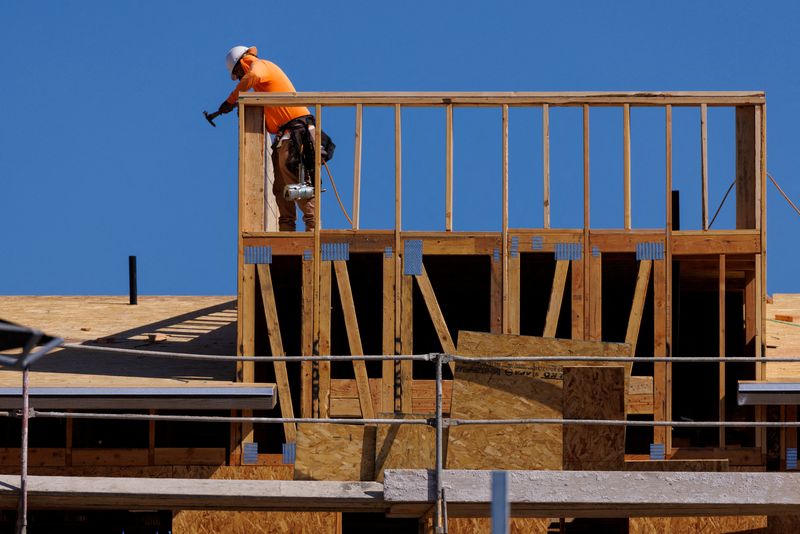WASHINGTON (Reuters) - U.S. construction spending unexpectedly fell in January as weakness in outlays on public projects more than offset a moderate increase in private homebuilding.
The Commerce Department said on Friday that construction spending dropped 0.2%. Data for December was revised higher to show construction spending increasing 1.1% instead of 0.9% as previously reported.
Economists polled by Reuters had forecast construction spending rising 0.2%. Construction spending increased 11.7% year-on-year in January.
Spending on private construction projects gained 0.1% in January after rising 0.8% in December. Investment in residential construction rose 0.2% after surging 1.4% in the prior month.
Outlays on new single-family construction projects increased 0.6%. Though demand for new construction remains underpinned by tight housing supply, higher mortgage rates are keeping many first-time buyers out of the market.
The average rate on the popular 30-year fixed-rate mortgage is hovering just under 7%, having risen from 6.62% at the beginning of the year, according to data from mortgage finance agency Freddie Mac. It has, however, come down from 7.79% in late October, which was the highest level since 2000.
Recent government data showed there were 757,000 housing units for sale in the fourth quarter, well below the 1.145 million units before the COVID-19 pandemic.
Outlays on multi-family housing projects dropped 0.4% in January. There is a large stock of multi-family housing in the pipeline, which could limit any rebound.
Outlays on private non-residential structures like factories slipped 0.1%. Spending on manufacturing construction projects advanced 2.0%, still benefiting from a policy by President Joe Biden's administration to bring semiconductor manufacturing back to the United States fades.

Spending on public construction projects declined 0.9% after rising 2.0% in December.
State and local government spending dropped 1.0% and outlays on federal government projects fell 0.2%.